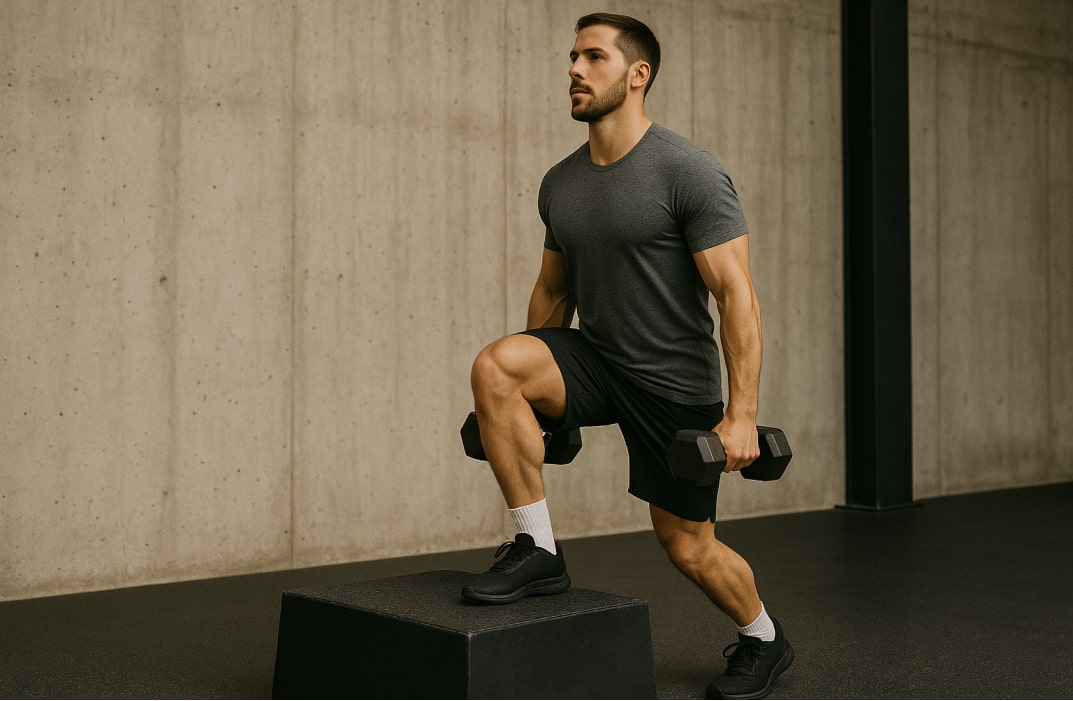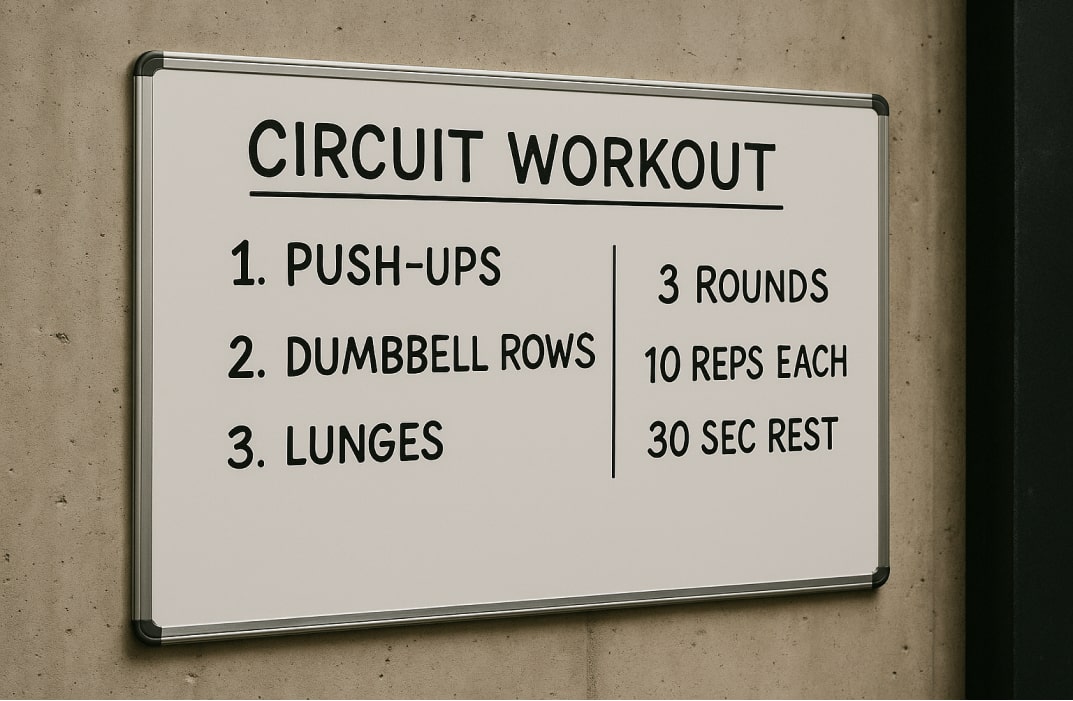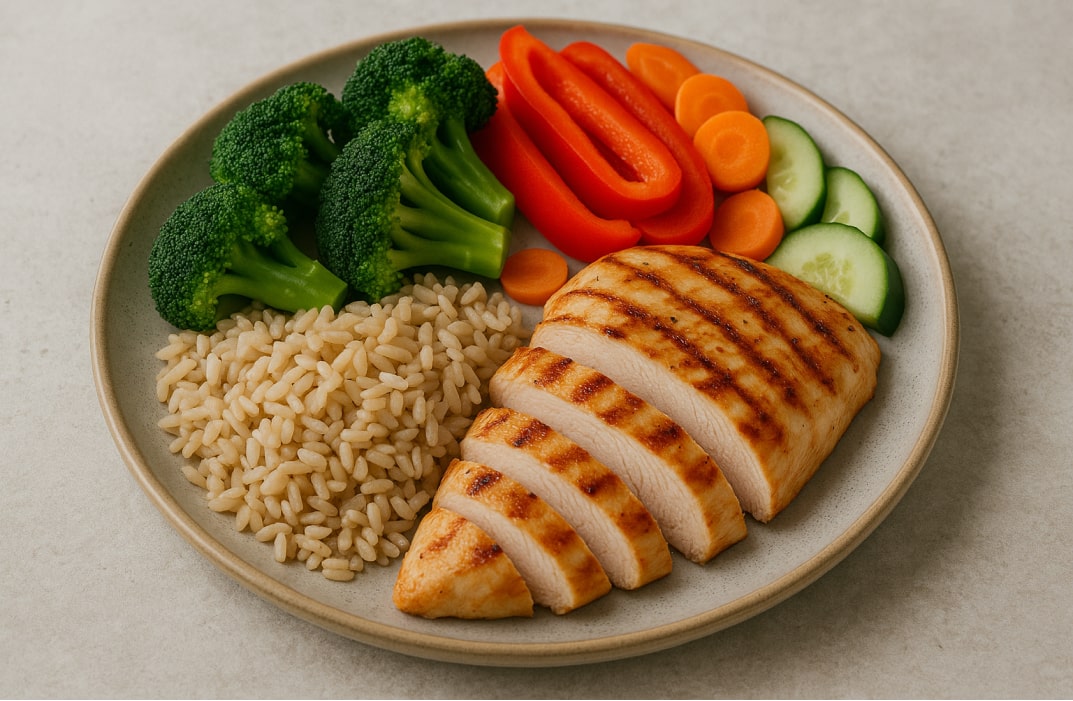When you think of fitness, two words often come to mind: strength and endurance. But what happens when you bring them together in a strength exercise? That’s where strength endurance comes in—a crucial fitness component that blends the power to exert force with the ability to sustain that effort over time.
Think about it: carrying groceries up three flights of stairs, performing a long set of push-ups without giving up, or holding a heavy plank for over a minute. These are all real-life examples of strength endurance in action. It’s not just about being strong for one rep, and it’s not only about lasting a long time—it’s about combining both for many benefits .
In this blog, we’ll break down what strength endurance is, why it matters, including its key components and how you can build it through training and workouts. You’ll also find examples, exercise guides, workout plans, and expert tips to help you apply it to your own fitness routine.
Quick definition:
Strength endurance is the ability of your muscles to exert force repeatedly or hold it for an extended period without fatigue.
What is Strength Endurance?
At its core, strength endurance is the ability to use your muscles for a long period while still exerting enough force to complete a task. In simple words, it’s about sustaining strength over time.
For example:
- A sprinter needs explosive strength for a short burst.
- A marathon runner needs endurance for hours.
- But a rower, football player, or circuit trainee needs both strength and endurance combined. That’s strength endurance.
Strength Endurance Definition (Primary Keywords)
- Strength endurance: the capacity to perform repeated muscle contractions with resistance for an extended period.
- Muscular strength endurance definition: how well your muscles can repeatedly lift, push, or pull moderate loads without tiring.
- Muscular strength and endurance definition: strength refers to how much force you can generate; endurance refers to how long you can sustain it. Together, they measure your overall fitness performance.
- Muscle endurance meaning: the ability of a muscle group to sustain activity over time without fatigue.
Difference Between Strength Endurance & Muscular Endurance

While the two terms are often confused, there’s a subtle difference when comparing it to maximum strength :
Strength vs Endurance vs Strength Endurance
To really understand strength endurance, it helps to compare it with the two fitness qualities it’s built on: strength and endurance.
- Strength is the ability of your muscles to exert maximum force in a single effort (like a heavy deadlift).
- Endurance is the ability to sustain activity for a long period without fatigue (like running a marathon).
- Strength Endurance is the middle ground, the ability to apply moderate-to-high force over an extended period (like doing multiple sets of push-ups or a long set of squats with weight).
Key Differences in Training Focus
Why Strength Endurance Matters More than Just One
Most real-life movements and sports require a blend of these qualities. For example, exercises that involve one leg demonstrate this blend.
- A football player must push opponents (strength) repeatedly throughout a game (endurance).
- A firefighter climbing stairs with gear needs to sustain force under fatigue.
- Even in daily life, carrying shopping bags upstairs tests your strength endurance.
Benefits of Strength Endurance
Training for strength endurance doesn’t just make you stronger in the gym—it makes you more resilient in life. By combining force with stamina, this type of training improves how your body performs, recovers, and functions daily, which can help increase strength .
Physical Benefits
When you focus on strength endurance, your muscles adapt to resist fatigue while still producing power. Over time, this leads to:
- Improved performance in sports, workouts, and long training sessions.
- Muscle growth and preservation of muscle mass, since higher repetitions with moderate loads stimulate both slow- and fast-twitch fibers.
- Fat loss, thanks to the calorie-burning effect of high-rep sets and circuit training.
- Reduced risk of injury, because stronger, more enduring muscles support better form and joint stability.
Health Benefits
The advantages aren’t limited to muscle performance. Strength endurance training also supports overall health:
- It boosts cardiovascular endurance, especially when performed in circuits.
- It promotes mental health and well being, reducing stress and improving mood.
- It strengthens the neuromuscular system, helping your body coordinate movements more efficiently.
Everyday Life Benefits

What makes strength endurance unique is how often you use it outside the gym. From household chores to recreational activities, it shows up everywhere.
Carrying groceries up stairs, climbing with a backpack, or playing with kids without needing frequent breaks all rely on sustained muscular effort. In short, it equips you to handle daily tasks with less fatigue and more confidence.
Strength Endurance Exercises

If you want to build strength endurance, your exercise selection matters. The goal is to challenge your muscles over an extended period while maintaining proper form and resistance. Unlike maximum strength training, where the focus is on heavy loads and short sets, strength endurance uses moderate weights, higher repetitions, and controlled rest periods.
Core Strength Endurance Exercises
Here are some effective exercises that combine strength and endurance:
- Push-Ups – A body weight exercise that builds upper body endurance while engaging the core.
- Step-Ups – Great for the lower body, mimicking climbing stairs or uphill walking.
- Bench Press (low-to-moderate weight, higher reps) – Trains chest, shoulders, and triceps for sustained force.
- Resistance Band Rows – Improves muscle endurance in the back and shoulders without stressing the joints.
- Circuit Training (e.g., squats + push-ups + planks) – A powerful way to build muscular and cardiovascular endurance simultaneously.
Why These Work
These movements aren’t just about lifting weights—they’re about repeating motion under fatigue. By targeting multiple muscle groups and using resistance training with proper technique, they prepare your body for both athletic performance and daily tasks, especially those that involve weight training.
Sample Strength Endurance Exercise Table
Pro Tip from a Strength Coach
“When training for strength endurance, don’t chase maximum weight. Focus on volume, form, and consistency. Your goal is to keep moving under control, not just to lift the heaviest load.”
Strength Endurance Training Methods & Programs

Building strength endurance isn’t just about choosing the right exercises—it’s about how you structure your training. The balance between weight, repetitions, rest periods, and training volume determines whether your body adapts for short bursts of power or for sustained muscular effort.
Key Training Methods
- Circuit Training – A mix of multiple exercises performed back-to-back with minimal rest. This keeps the heart rate high while challenging different muscle groups.
- High-Rep Resistance Training – Using light-to-moderate weights for 12–20+ reps per set builds both muscular and cardiovascular endurance.
- Body Weight Workouts – Push-ups, step-ups, planks, and climbing movements help train the body to sustain activity without relying on heavy equipment.
- Interval Training – Alternating between periods of effort and short recovery enhances stamina while still building strength.
Structuring a Strength Endurance Training Program
A strength endurance training program should balance intensity and volume to avoid fatigue while promoting steady progress.
Sample Program (3 Days per Week):
Training Guidelines from Experts
- Focus on form over load to reduce injury risk.
- Keep rest periods short (30–60 seconds) to maintain endurance emphasis.
- Use moderate intensity—not too heavy, not too light.
- Gradually increase training volume (more sets, longer circuits) to progress.
Why Programs Matter
Without structure, workouts can quickly lose their effectiveness. A program ensures you’re training with progression, balance, and purpose, making it easier to build strength and endurance without burnout.
Nutrition Tips to Support Strength Endurance

When it comes to building strength endurance, what you eat is just as important as how you train. Your muscles need fuel to sustain repeated effort, recover efficiently, and adapt to progressive workouts. Focusing on the right combination of protein, carbohydrates, fats, and hydration can dramatically improve your performance and recovery.
Protein: The Muscle Builder
Protein is essential for repairing and rebuilding muscle fibers stressed during strength endurance exercises. Without sufficient protein, your muscles may not recover properly, leading to fatigue, slower progress, and even muscle loss over time. Aim for lean sources such as chicken, turkey, eggs, fish, tofu, and legumes. Spread your protein intake throughout the day to maximize absorption and recovery.
Carbohydrates: The Energy Source
Carbohydrates are your body’s primary energy source, especially during high-rep or circuit-based strength endurance workouts. Complex carbs like oats, brown rice, quinoa, sweet potatoes, and whole-grain bread provide sustained energy, keeping your muscles fueled throughout extended training sessions. Including carbs in pre-workout meals ensures you have the stamina to complete circuits, while post-workout carbs help replenish glycogen stores for recovery.
Healthy Fats: Endurance Support
Don’t overlook fats—they play a crucial role in long-term energy and overall health. Sources such as avocados, nuts, seeds, olive oil, and fatty fish support hormone production and reduce inflammation, aiding recovery and muscle function. While fats aren’t the main fuel for high-intensity bursts, they contribute to overall endurance during longer sessions, which is crucial for endurance athletes .
Hydration: Staying at Your Best
Dehydration can significantly reduce muscular strength and endurance. Drink water consistently throughout the day, and consider electrolyte drinks during longer or intense sessions. Proper hydration helps your muscles contract efficiently and prevents premature fatigue.
Pre- and Post-Workout Nutrition
- Pre-workout: Focus on a balance of carbs and protein 1–2 hours before training. Examples: oatmeal with nuts, banana with peanut butter, or yogurt with berries.
- Post-workout: Aim for protein and carbs within 30–60 minutes after exercise to aid recovery and glycogen replenishment. Examples: grilled chicken with quinoa and vegetables, smoothie with protein powder and fruit, or eggs with whole-grain toast.
Sample Day of Nutrition for Strength Endurance
By combining balanced macronutrients, proper timing, and hydration, you create the ideal environment for your muscles to perform, recover, and grow. Remember, even the best training plan won’t reach its potential without proper nutrition, so treat your meals as seriously as your workouts.
Also read: Hydration Strategies for Optimal Performance
Strength Endurance Workout Plan (Examples for Beginners & Advanced)
A good strength endurance workout plan gives you a roadmap—not just random exercises. It helps you progress systematically, whether you’re a beginner learning the basics or an advanced athlete fine-tuning performance.
Beginner Strength Endurance Workout Plan
For beginners, the focus should be on body weight exercises, light resistance, and proper form. This builds a strong foundation while reducing injury risk.
Sample Beginner Plan (2–3 Days/Week):
Advanced Strength Endurance Workout Plan
Advanced lifters can push intensity with circuit training, higher reps, and shorter rest. The aim is to maintain force output under fatigue for a longer time.
Sample Advanced Plan (3–4 Days/Week):
Why This Works
Both beginner and advanced plans are designed to:
- Improve muscular endurance and strength at the same time.
- Keep the neuromuscular system engaged through repeated movement.
- Support fat loss, muscle growth, and overall performance.
Strength Endurance Examples: Sports & Real-Life Applications

Strength endurance isn’t just something you train for in the gym—it’s essential in almost every sport and many daily activities. Seeing real-world examples makes it easier to understand why this type of training is so valuable.
Sports Examples
Many sports coaches enable athletes to rely on strength endurance to maintain peak performance throughout their events:
- Football players repeatedly sprint, tackle, and push opponents during a match, combining raw strength with sustained activity.
- Rowers engage their upper body and core continuously, maintaining rhythm and force for minutes or even hours.
- Martial artists hold stances, deliver repeated strikes, and sustain high-intensity movements without fatigue.
- Basketball players jump, sprint, and defend continuously over the course of a game, requiring both power and stamina.
Real-Life Examples
Strength endurance is also critical in daily life. Some examples include:
- Climbing stairs with groceries, engages legs, glutes, and core while carrying a load.
- Playing with children involves constant lifting, bending, and movement without tiring quickly.
- Gardening or yard work, which requires repeated lifting, digging, or bending over for long periods.
- Carrying luggage or heavy bags demands sustained muscle effort across multiple movements.
By training with these principles in mind, you prepare your muscles to perform under real-world conditions, making daily tasks easier and sports performance more efficient.
Tips for Safe & Effective Strength Endurance Training
Training for strength endurance can transform your fitness, but doing it safely is just as important as pushing yourself. Here’s how to get the most out of your workouts while avoiding injury or burnout.
Focus on Proper Form
No matter how many reps or how heavy the load, form always comes first. Using correct technique protects your joints, engages the right muscles, and ensures your strength endurance improves efficiently. For example, during push-ups or bench presses, keep your core tight, shoulders stable, and movements controlled.
Gradually Increase Intensity
Strength endurance is built over time. Start with lighter weights or body weight exercises and gradually increase volume, resistance, or circuit duration. This progressive overload helps your muscles adapt without causing excessive fatigue or injury.
Manage Rest Periods
Short, structured rest periods are key to building endurance. Between exercises or circuits, aim for 30–90 seconds of recovery. This allows your muscles to recover partially while still keeping the endurance challenge intact.
Include Variety
Mix up exercises to target different muscle groups and energy systems. Combine body weight exercises, resistance bands, free weights, and circuit training. Variety prevents plateauing, improves overall fitness, and keeps workouts engaging.
Warm-Up and Cool Down
Always start with a warm-up to increase blood flow and prepare your muscles. Dynamic stretches, light cardio, or mobility drills work well. End your session with a cool-down to help recovery, reduce soreness, and maintain flexibility.
Listen to Your Body
Pay attention to signs of overtraining, fatigue, or discomfort. Strength endurance training pushes your limits, but it shouldn’t cause pain. Adjust weights, reps, or rest periods if needed, and consult a coach if you’re unsure.
How FitBudd Can Help You Build Strength and Endurance?

As a fitness coach, helping clients build strength and endurance goes beyond just prescribing workouts it’s about delivering the right progression, tracking results, and keeping every client engaged. FitBudd makes this process seamless by giving you the tools to design personalized training programs that adapt to each client’s fitness level, equipment access, and goals.
With FitBudd, you can easily create structured strength and endurance programs from high-rep bodyweight circuits to progressive resistance routines without spending hours on manual planning. The app lets you automate progress tracking, so you can monitor each client’s sets, reps, and performance trends in real time.
You’ll also have access to built-in exercise demonstrations, recovery guidelines, and nutrition support, which help ensure your clients train safely and effectively. Plus, automated reminders and in-app communication features make client accountability effortless.
In short, FitBudd empowers coaches to deliver measurable results, scale their coaching business, and save time, all while helping clients consistently improve their strength and endurance.
Conclusion
Strength endurance is the bridge between pure strength and pure stamina. It allows your muscles to exert force repeatedly over time, supporting both athletic performance and everyday life. From lifting weights to climbing stairs or playing sports, strength endurance is what keeps your body performing efficiently under sustained effort.
By incorporating strength endurance exercises, structured training programs, and proper progression, you can improve muscle endurance, overall strength, and physical performance. Whether you’re a beginner using body weight exercises or an advanced athlete performing circuit training, the key is consistency, proper form, and gradual progression.
In addition to physical benefits, strength endurance training enhances mental health, cardiovascular fitness, and functional strength, making daily activities easier and more enjoyable. In short, it’s not just about lifting more—it’s about moving stronger and longer in all areas of life.
92% trainers worldwide gave us 5 stars
Talk to your dedicated success manager and launch your branded fitness app during the demo in minutes.
Start your paid subscription for $79 FREE





%20to%20Become%20a%20Certified%20Personal%20Trainer-min.jpg)





